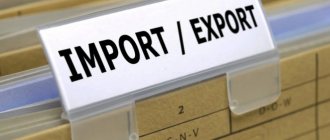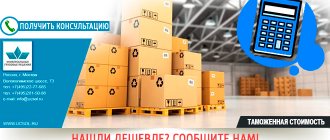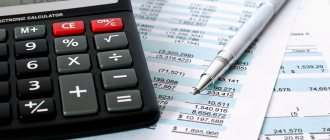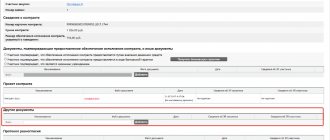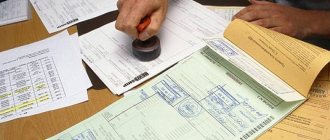Home > Blog > Customs value
Quick links
Customs Delivery Certification Labeling Inspection
Customs value is one of the most important characteristics of goods imported into the territory of the EAEU, because:
- used as a basis for calculating customs payments: duties (import/export), VAT, excise taxes, fees;
- allows you to determine not only the actual cost of the goods, but also the amount of financial costs for its transportation to the customs border of the Union;
- used to maintain customs and foreign trade statistics.
In addition, customs value (CV) may be the basis for the use of non-tariff and other measures to regulate foreign economic activity.
Determination of the customs value of goods
Calculation of the customs value of imported goods is carried out in accordance with the current regulatory legal acts (LLA) governing the procedure and methods for determining the vehicle. Currently, such legal acts are: When importing:
- Customs Code of the Eurasian Economic Union (EAEU TC) – Chapter 5;
- Federal Law of August 3, 2021 No. 289-FZ “On customs regulation in the Russian Federation and on amendments to certain legislative acts of the Russian Federation” – Chapter 5;
Update from 01/23/2020
Decree of the Government of the Russian Federation No. 1694 dated December 16, 2019 defines the methodology for calculating the customs value of exported goods.
The customs value is calculated by the declarant (cargo owner) or a licensed foreign trade agent acting on his behalf, who may be:
- customs representative (broker);
- authorized economic operator.
After calculation, the resulting vehicle value is rounded according to mathematical rules accurate to two decimal places and declared:
- in column 45 of the declaration of goods (DT), where it is used as the basis for calculating customs duties;
- in the declaration of customs value (DTV), which confirms the validity of the statement of the selected amount.
When using the first method of determining customs value, a declaration is drawn up in the DTS-1 form. When using 2-6 methods, registration is carried out using the DTS-2 form.
Determination of import duty and VAT rates
To talk about the practice of determining duty rates and VAT, it is necessary to get acquainted with the Commodity Nomenclature of Foreign Economic Activity system, since these and many other aspects of customs affairs are “tied” to this classification.
What is TN VED
TN VED stands for “Commodity Nomenclature of Foreign Economic Activity”. This is a unified classifier of product groups used for taxation and customs statistics purposes in Russia and the EAEU countries. It has a tree structure and is divided into 21 sections, each of which is further specified and divided into smaller groups.
Here is an example of a grouping of the Commodity Nomenclature for Foreign Economic Activity, taken from the best, in my opinion, Russian-language site about customs tks.ru:
Example of a commodity group under the Commodity Nomenclature of Foreign Economic Activity
If you write down the number of the section, group, position and subposition next to it, you will get the HS code. It consists of 10 digits.
Why do we need the Commodity Nomenclature for Foreign Economic Activity?
The goal of using such systems throughout the world is to transition from the unlimited and immense variety of all goods to a finite list of enlarged product groups. In other words, customs cannot set rules for each individual product, but can do so for a product group with predetermined criteria. It is enough to assign a specific product to one or another group (i.e. assign it a HS code), and all the rules of this group will immediately apply to this product.
All state regulation of foreign economic activity is carried out through the Commodity Nomenclature of Foreign Economic Activity system; export and import statistics are also maintained in the same context. Therefore, in addition to duty and VAT rates for certain codes (and sometimes entire groups of HS), mandatory certification requirements, quotas, excise taxes, or, on the contrary, preferences for importers may be established.
That is why assigning and justifying the HS code for all goods that you plan to buy abroad is a critically important stage in preparing import supplies. It will be considered separately, but for now we will limit ourselves to the information we need about the rates of customs duties. In particular, if you are working with the HS tree on the TKS website, click on the “%” icon next to the code of interest. In the window that opens, you will see the import duty and VAT rates.
How customs value is calculated: 6 methods for determining customs value
6 methods for determining customs value are legally defined
imported goods:
- at the transaction price of imported goods;
- at the price of a transaction with identical goods;
- at the price of a transaction with similar goods;
- subtraction;
- addition;
- spare.
Methods for determining customs value are applied sequentially, starting with the first. Each subsequent one (from 2 to 6) can be used only if the vehicle cannot be determined by applying the previous one.
Exceptions are the methods of addition (5) and subtraction (4), which can be used in any sequence at the discretion of the declarant.
The first method of determining customs value is based on the transaction price of imported goods
The main and most preferred method for determining customs value is the first method. It involves confirmation of the transaction value based on a full package of documents, which includes:
- a copy of the foreign trade contract with all additions and appendices, if any;
- contract for transport and forwarding services;
- invoice;
- price list;
- bank documents;
- shipping documents;
A complete list of documents required to confirm the first method of customs value can be found in the corresponding section of our website.
According to the method based on the transaction price of imported goods, the customs value consists of the invoice value (the price of the goods indicated in the invoice) and the buyer’s expenses incurred in the process of purchasing and delivering goods to the border of the EAEU.
Conventionally, the calculation of customs value using the first method can be presented as a formula:
TS=FS+RS, where
TS – customs value; FS – invoice cost; Рс – the buyer’s expenses incurred in the process of purchasing the goods and delivering them to the border of the EAEU.
If the buyer’s expenses are considered in more detail, the formula for calculating the customs value will look like this:
TS=FS+TR+SS+PRR+VP+LP, where
TR – transport costs to the border of the EAEU; CC – cost of insurance; PRR – cost of loading and unloading operations and warehousing; VP – payments to intermediaries; LP – license fees are paid if the imported goods are objects of intellectual property.
For goods purchased under a purchase and sale agreement, the use of any method of determining customs value, except for the first, actually means assigning an adjustment to the customs value in the direction of its increase and the need to pay customs duties recalculated from the adjusted value.
In order to prevent such problems and carry out customs clearance of your cargo without CTS, we recommend entrusting this process to professionals who will:
- will check the entire package of documents for the transaction and promptly inform about missing documents/information;
- will advise on possible questions from customs regarding the price level of imported goods;
- and will also help you go through all the necessary customs formalities using the first method.
When customs authorities have doubts about the reliability/sufficiency of the information declared to confirm the first method, the customs value can be determined using the second method.
Some important nuances
When calculating customs duties, keep in mind:
- The customs value of the declared goods is denominated in rubles . Regardless of the currency in which the goods were purchased and all included expenses, the customs value must be converted into rubles at the Central Bank exchange rate on the day of filing the customs declaration.
- VAT paid at customs is claimed for reimbursement on a general basis, as for ordinary purchased goods and services. Importing goods by an agent does not deprive the consignee-principal of this right!
The second method of determining customs value is based on the transaction price of identical goods
According to this method, the customs value of imported goods is calculated on the basis of the customs value of identical goods imported into the customs territory of the Union or exported outside its borders.
Identical goods - goods identical in their physical and/or chemical characteristics, manufacturer, country of origin, quality and reputation, imported into the territory of the EAEU during the same period of time - no more than 90 days from the date of importation.
For identical products, minor differences in appearance are allowed, for example, a different color of the entire body or one of the parts.
only be considered identical
in case of unavailability of suitable products from the same manufacturer.
Other differences between identical goods are not allowed
.
Goods are not counted
identical if:
- they were produced in another country;
- in their respect, the process of design, development, engineering and/or design work, artistic decoration, design development, sketches and drawings and other similar work were carried out in the customs territory of the EAEU.
In practice, the application of the method based on the transaction price of identical goods to calculate the vehicle price is as follows:
- Customs authorities have doubts regarding the reliability/sufficiency of the declared information;
- An additional check is assigned, and an additional package of supporting documents is requested from the declarant;
- If the information provided by the declarant is not enough to confirm the first method, the customs authorities select suitable sources of price information. If customs officials have identified 2 or more suitable options for the value of a transaction with identical goods, the lowest of them is used to determine the customs value of the goods being valued;
- The declarant or a person authorized by him carries out the calculation of the vehicle based on the information provided by the customs authorities, taking into account amendments that take into account differences in the commercial level of sale, method of cargo transportation, quantity and/or weight of the consignment.
Conventionally, the calculation of customs value according to the second method, in the case of differences in batches of imported and valued goods by weight, can be presented in the form of a formula:
TS=(TSit/Rit)*P, where
TS – customs value; TSit – customs value of identical goods; Rit – weight of identical goods, in kg; P – weight of imported goods, in kg.
However, it is not always possible to find goods that are completely identical to those imported; in this case, the customs value is determined based on the transaction price of similar goods.
Factors influencing cost
The cost of importing goods is calculated taking into account the conditions described in the agreement on foreign economic activity. It is in it that it is stipulated that, in addition to overhead costs, it will influence the formation of retail cost. The importer can choose one of the following scenarios:
- The foreign counterparty undertakes to deliver the goods to the destination and bear the transportation costs. All associated costs associated with transportation, it includes overhead costs. The customer’s tasks include paying customs expenses and including them in the cost price.
- The foreign counterparty undertakes to pay only for customs clearance of goods, and transportation and procurement costs are borne by the importer. In this case, when calculating the cost, the latter takes into account both transport and customs costs.
The cost of imported goods is an operating expense. When calculating it, they rely on primary documentation, which serves as confirmation that the taxpayer has spent the funds. It should not be forgotten that imported products are sold in foreign currency. That is why the official exchange rate must be used in calculations.
The third method of determining customs value is based on the transaction price of similar goods
The transaction price method for homogeneous goods is practically no different in the procedure of its use from the second method of determining the vehicle. The only difference is the concept of goods being valued; for the third method these are homogeneous goods.
Homogeneous goods are goods that have similar characteristics, consist of similar components and are made from the same materials as the imported goods, which allows them to:
- perform the same functions as imported goods;
- be commercially interchangeable with imported goods.
In the process of analyzing the homogeneity of goods, characteristics such as quality, reputation and the presence of a trademark are taken into account.
The reasons for not classifying the goods being valued as homogeneous are the same as for identical ones.
Conventionally, the calculation of customs value using the third method can be presented as a formula:
TS=(TSot/Rot)*P, where
TS – customs value; TSot – customs value of homogeneous goods; Mouth – weight of homogeneous goods, in kg; P – weight of imported goods, in kg.
If it is impossible to use any of the methods for determining the vehicle based on the transaction price, either the subtraction method or the addition method is used.
The fourth method of determining customs value is subtraction
According to the fourth method, the customs value is determined by subtracting all costs incurred by a participant in foreign trade activities on the territory of the EAEU. As a basis for calculating the vehicle price using this method, the final cost of imported (valued), identical or similar goods can be used, i.e. the cost at which goods were sold in the largest volumes in Russia in an unchanged condition (without any modifications).
Conventionally, the calculation of customs value using the fourth method can be presented as a formula:
TS = TsR-TRv-TP-VP, where
TS – customs value; CR – selling price of goods on the territory of the EAEU; TRv – transportation costs for cargo delivery across the territory of the EAEU; TP – customs duties; VP – intermediary remuneration.
The fourth method of determining customs value is used extremely rarely in practice.
The fifth method of determining customs value is addition
According to the fifth method, the customs value is determined by adding up all the costs incurred for the production and delivery of goods to the border of the EAEU. Conventionally, this can be represented as a formula:
TS=Рpr+Рс, where
TS – customs value; Ррр – expenses incurred in the process of production of goods; Рс – the buyer’s expenses incurred in the process of purchasing the goods and delivering them to the border of the EAEU.
If we consider all expense items in more detail, the formula for calculating customs value will look like this:
TS=M+Ipr+TR+SS+PRR+VP+LP+Pr, where
M – cost of materials; IPR – costs incurred by the manufacturer in connection with the production of goods; TR – transport costs to the border of the EAEU; CC – cost of insurance; PRR – cost of loading and unloading operations and warehousing; VP – payments to intermediaries; LP – license fees, paid if the imported goods are objects of intellectual property; Pr is the profit usually received by the exporter as a result of the supply of such goods to the Russian Federation.
Update from 01/23/2020
When exporting goods from the Russian Federation, the formula for the cost addition method will look like this:
TS=Rpr+P+Kr+Ur
TS – customs value; Ррр – expenses incurred in the process of production of goods, for example, for the purchase of raw materials; P – the amount of profit that is usually taken into account when selling goods of the same type to the same country as the exported goods; Кр – commercial expenses, which are usually taken into account when selling goods of the same type to the same country as the exported goods; Ur are administrative expenses that are usually taken into account when selling goods of the same type to the same country as the exported goods.
The fifth method of determining the customs value, just like the fourth, is used extremely rarely in practice, since, as a rule, the customs value is determined based on the information available in the customs territory of the EAEU. However, to calculate the TC using the 5th method, information is required on the costs incurred by the manufacturer in the process of producing goods, for example, costs for materials, various types of costs and other confidential information. In this case, a situation often arises when the manufacturer refuses to provide confidential information about the production process, and the use of this method, as a result, becomes impossible.
The sixth method for determining customs value is reserve
The reserve method for determining customs value is a full reflection of its name. It is applied only if it is impossible to determine the vehicle using methods 1–5, which most often occurs when importing goods obtained not as a result of fulfilling the obligations of a sales contract, but in another way, for example, importing samples or advertising materials free of charge.
Calculation of customs value according to the 6th method is carried out on the basis of expert assessments and the selected base (method for determining customs value, which will be taken as the basis for the calculations made). The procedure for choosing a base for method 6 is no different from choosing a method for determining the vehicle: methods 1 to 5 are used sequentially, starting with the first, each subsequent one can be used only if the use of the previous one is impossible. Exceptions: 4 and 5 are interchangeable.
After selecting a base, the fallback method is applied:
- appropriate designation, for example, method 6 based on method 1 or method 6 based on 3;
- the corresponding formula and principle for calculating the vehicle, i.e. The following data can be used for calculation: transaction price of imported/identical/similar goods, production and materials costs or final sale cost.
When determining customs value using the reserve method, a number of simplifications are provided:
- the basis may be the value of a transaction with identical/similar goods produced in a country different from the country of origin of the imported goods;
- A reasonable deviation from the period for classifying goods as homogeneous/identical is allowed (more than 90 days from the date of importation of the goods being assessed into the customs territory of the Union).
Regardless of the method for determining the customs value of goods, if, after checking the provided package of documents, a customs official has doubts about the reliability of the customs value declared by the declarant, he may decide to conduct an additional check of the customs value.
Who should make the payments?
Responsibility for making any payments related to customs taxes and duties always lies with the declarant. Moreover, the responsible person is obliged to calculate his payments independently, and the customs value must be set correctly in order to avoid penalties in the future. There are only a few situations in which calculations of taxes and duties are carried out by the relevant authorities:
- for goods that do not require filing a separate declaration - for them everything is calculated directly by customs, using only a receipt order;
- if there is a requirement to pay additional security (in the event of an upward change in the customs value of the goods).

